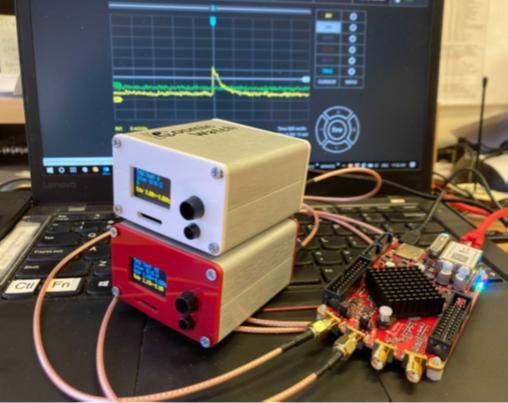How Red Pitaya helped MIT Physics students during the COVID pandemic
-
Posted by
 Red Pitaya Team
, September 15, 2022
Red Pitaya Team
, September 15, 2022

We often and rightfully state that education is part of Red Pitaya´s DNA. That´s no surprise, given the perfect match between the wide range of technical possibilities the units offer at a more than affordable price, and the limited budgets schools and universities usually have at their disposal. Nevertheless, it´s not always easy to find concrete educational projects where a STEMlab plays the main role. Ironically, the COVID crisis offered a good opportunity to highlight one of these projects. The story becomes even better knowing that the project was set up at MIT, one of the world’s leading academic centres for science and technology.
As Sandi Miller explains in her article Teaching physics in the age of Zoom, in 2020 university campuses in the US were shut down due to the coronavirus, and teaching models needed to be reinvented and adapted to online classes. People thus become more familiar with remote teaching and learning, and discovered both the advantages and disadvantages of this system.
At first, the lockdown took everyone by surprise, so there was very little or even no time to prepare practical experiments for the students. During the summer of 2020, Gunther Roland and Sean Robinson of the MIT Physics Department Junior Lab developed a way for students to perform experiments at home, preparing a shippable lab kit (Fig. 1), including a Red Pitaya STEMlab board and two pocket-sized “CosmicWatch” cosmic ray muon detectors, developed by Spencer Axani. These setups turned out to be professional-quality particle detectors, helping physics students to become real physicists in a time where difficult conditions can also be considered exciting challenges.

Figure 1: Junior Lab's home kit including two cosmic ray detectors and a Red Pitaya STEMlab board
Now, in 2022, things have more or less gone back to normal, and students have returned to their traditional on-campus lab settings. But some things from those strange times will certainly stay with them well into the future, two of the positives being the experience of working out a project on their own, and the simplicity and versatility of the STEMlab unit, always ready for the next challenge.
About the Red Pitaya Team
The Red Pitaya editorial team consists of engineers, researchers, and product experts who develop and test cutting-edge open-source test & measurement solutions.
Our mission is to make advanced instrumentation accessible to everyone — from students and educators to leading research labs worldwide.



